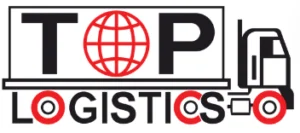Effective Route Planning
Choose logistics solutions that include thorough route planning and dynamic route adjustments to avoid flooded and poorly maintained areas. By analyzing traffic patterns, road conditions, and weather forecasts, companies can identify the most efficient routes and minimize the risk of delays.
Regular Vehicle Maintenance and Waterproofing
Ensure your logistics partner maintains a rigorous vehicle maintenance schedule, keeping all trucks in top condition and equipping the fleet with the latest technology to withstand harsh monsoon conditions. Applying waterproofing measures to trucks and cargo protects against water damage, including sealing vulnerable areas and using waterproof covers.
At Top Logistics, we ensure our vehicles are maintained to the highest standards, minimizing the risk of breakdowns. Our proactive maintenance approach, combined with waterproofing measures, keeps our fleet in peak condition, ready to handle the monsoon's challenges and protect your cargo from water damage.
Driver Training and Preparedness
Look for logistics providers that focus on driver safety with comprehensive training programs for safe driving in monsoon conditions. Ensure drivers are well-equipped with rain gear and other necessary tools.
Supply Chain Management
Opt for logistics solutions that use advanced supply chain management systems to quickly adapt to disruptions. Ensure they maintain proactive communication with clients and partners to manage expectations and coordinate efforts. Real-time visibility into inventory levels, production schedules, and transportation status is crucial for agile decision-making.
Technological Solutions
When seeking logistics solutions, prioritize those that invest in cutting-edge technology such as GPS and real-time tracking systems to monitor vehicle locations and conditions. Ensure they use weather forecasting tools for better planning and anticipation of adverse conditions. These technologies enable logistics companies to optimize route planning, anticipate weather-related delays, and respond quickly to changing conditions.
Optimizing Fuel Efficiency
Seek out logistics companies that optimize routes to minimize fuel consumption and costs. Regular vehicle servicing to ensure maximum fuel efficiency, and adopting fuel-saving technologies, can help mitigate the impact of rising fuel costs.
Communication and Coordination
Choose logistics partners that keep all stakeholders informed about potential delays through regular communication with clients, suppliers, and partners. Managing expectations and coordinating efforts to overcome logistical hurdles is essential.
At Top Logistics, we prioritize transparency and communication, keeping our clients and partners informed about any potential delays. This builds trust and ensures smoother operations during the monsoon.

